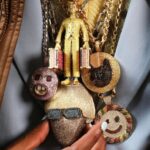About two weeks ago, I heard the news that Cartier would be holding a TRINITY 100 themed exhibition in Shanghai this July. I immediately set my itinerary.
Cartier’s TRINITY is grandly celebrating its 100th birthday, and I’m sure you’ve already seen it all over social media.
Since the beginning of the year, Cartier has been hosting various celebration parties in New York, London, and Paris. The Shanghai event marks the first stop of the TRINITY 100 themed exhibition’s global tour, which will later visit Singapore, Tokyo, and the United States.

With such an anticipated large-scale event happening right at our doorstep, there was no reason not to go!
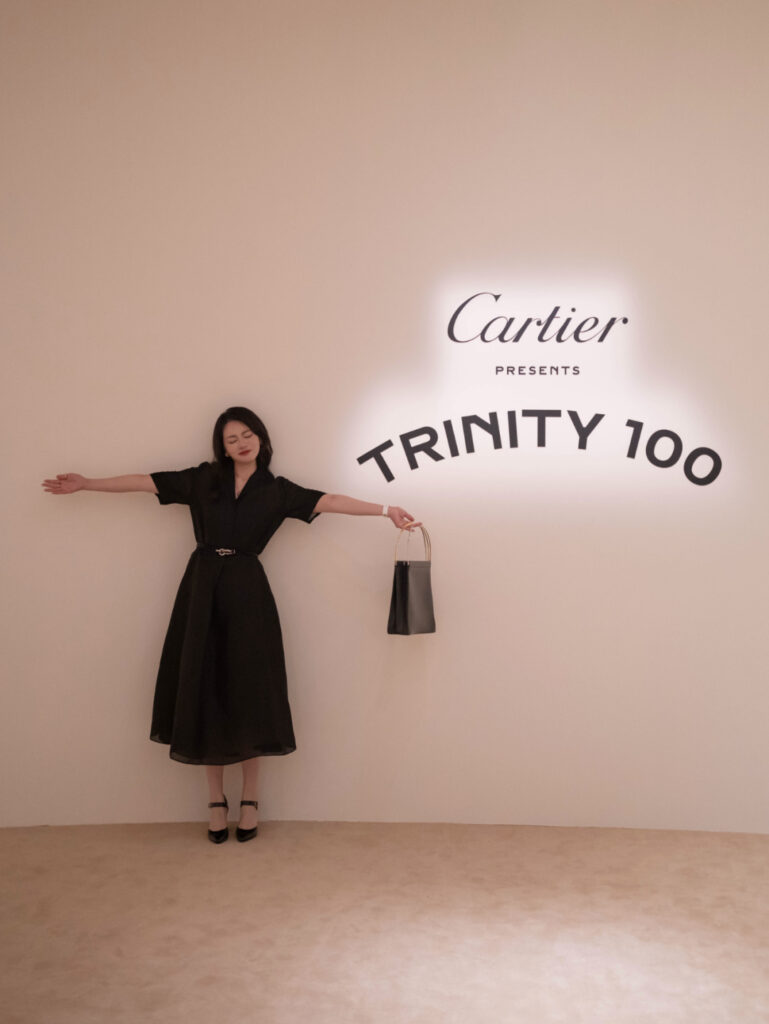
Of course, another reason was pure curiosity.
When we usually think of jewelry exhibitions, we imagine dazzling jewels and diamonds, evoking scenes of glamorous lifestyles. However, the TRINITY 100 themed exhibition felt quite different. You’ll feel like you’ve wandered into various creative spaces full of ingenious ideas, rich and unique.
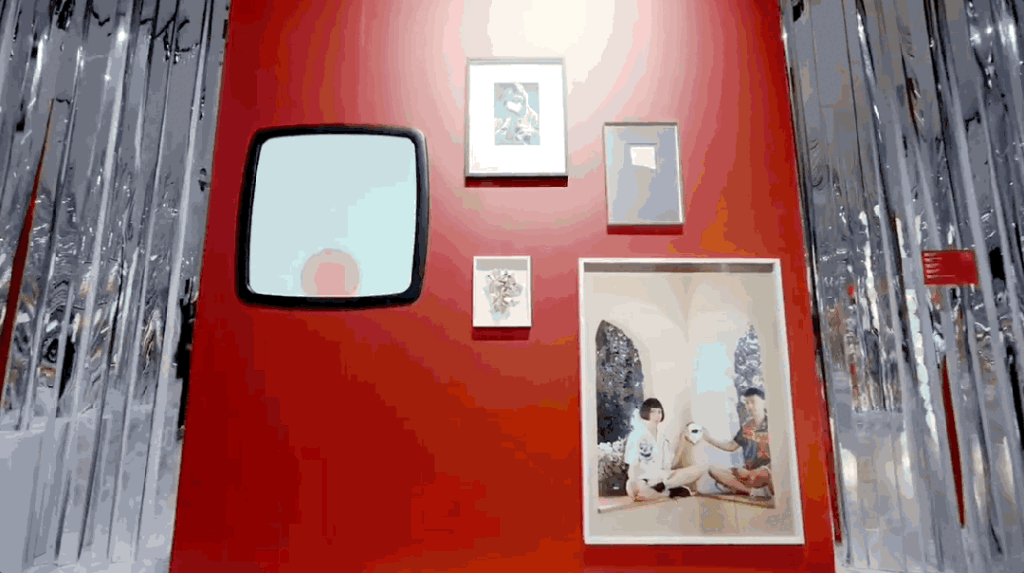
I couldn’t help but marvel at how the content derived from TRINITY could be so diverse and wonderful!
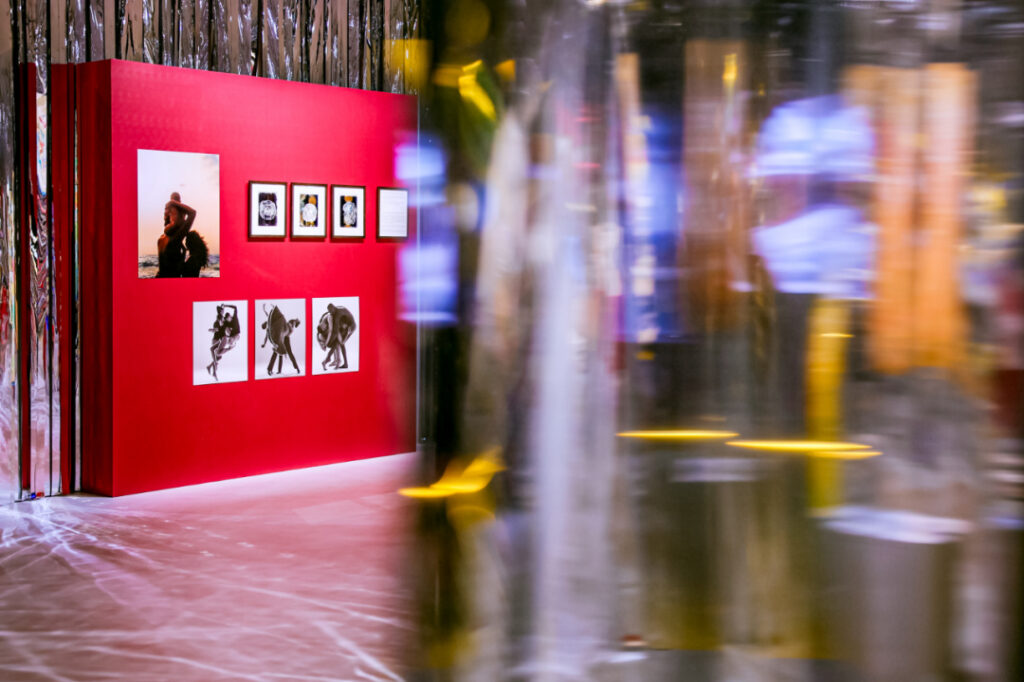
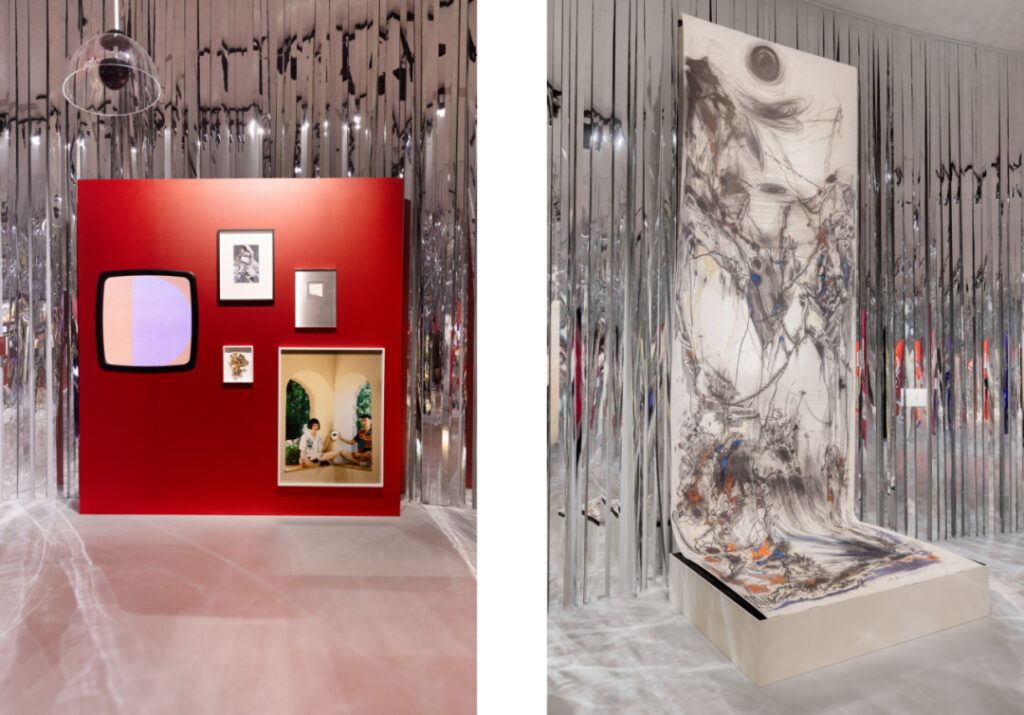
The space where I lingered the longest in the TRINITY 100 themed exhibition was the “Infinite Imagination, Interlinked Circles” area. We were like wanderers in a maze of rings, and as we walked, we would encounter “small rooms.” Inside were imagination spaces created by creative guests from around the world invited by Cartier, inspired by TRINITY.
The forms of expression were incredibly varied – some were images, some were sounds, and some were installations you could interact with. It was like the cabinets of curiosities that everyone from popes to kings, from wealthy merchants to knights’ families, had during the Renaissance. It was incredibly fun and, of course, very photogenic!

Among them, Cartier’s brand ambassador Jackson Wang also had a space. Walking in, you’d feel, “Wow! This is so Jackson Wang!” There’s a passionate three-ring red light chasing you. Wang even created a vibrant piece of music for TRINITY, expressing his understanding and insights about TRINITY.
Besides the ingeniously fun and rich visual experience, this exhibition gave me a very interesting perspective – understanding Cartier anew from the starting point of TRINITY.
Before visiting the exhibition, I had some questions. TRINITY, born in 1924, naturally has a long history and story, but why could such a simple tri-color gold design, such pure three interlocking rings, become the source of Cartier’s enduring style?
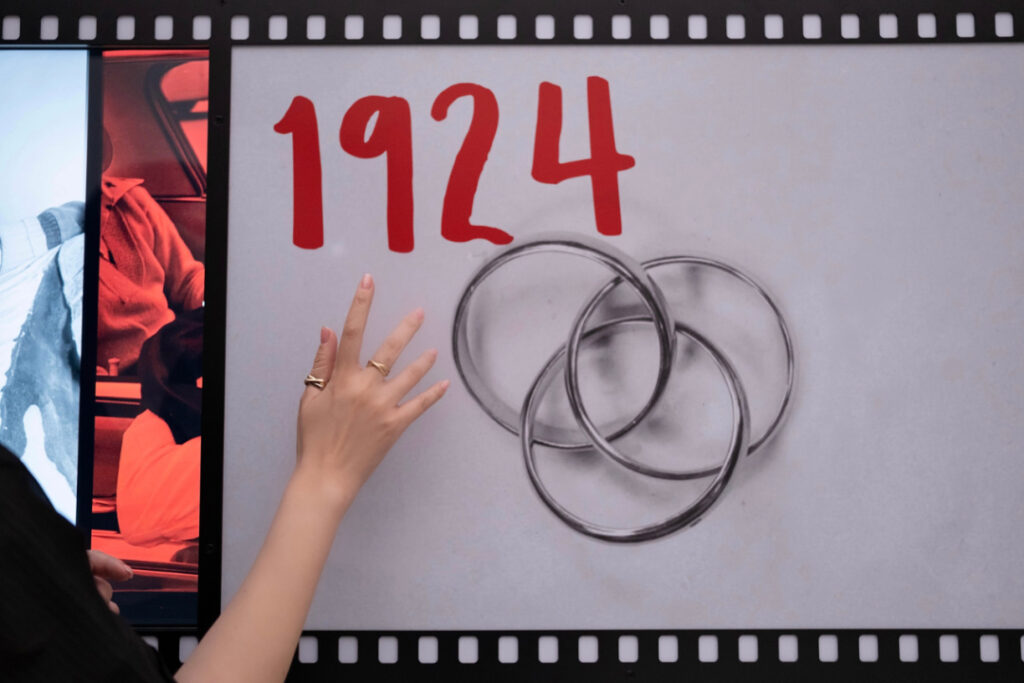
Throughout the exhibition, the number “three” derived from TRINITY was omnipresent, as well as the infinitely meaningful interlocking and endless circular elements.
Whether abstract or concrete, immersing oneself in these elements easily evokes associations with religious and philosophical concepts like the “Trinity” and “interconnected cycles.” For Chinese people, more familiar expressions would be “three begets all things” and “endless cycle of life.”
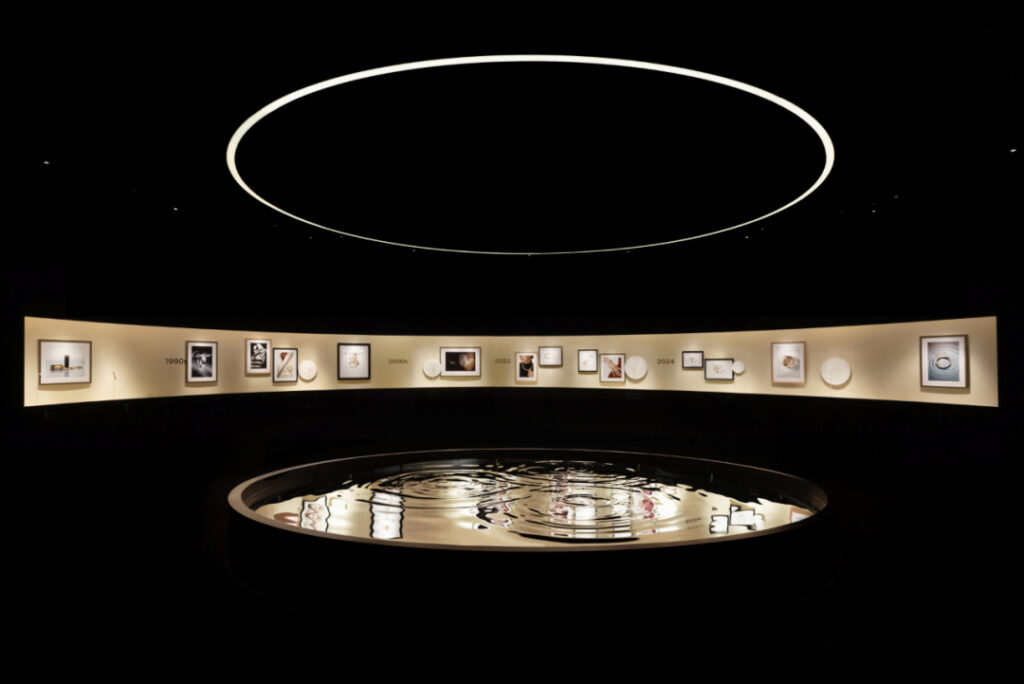
In the TRINITY 100 themed exhibition’s timeless style space, besides the century-long journey of TRINITY that extends like interlocking rings, the central circular water pool installation had a special Zen-like quality. The movement of water droplets continuously created intertwining circular patterns on the water’s surface. This most ordinary dynamic seemed to contain the truth of the entire universe, as if the whole world had calmed down.
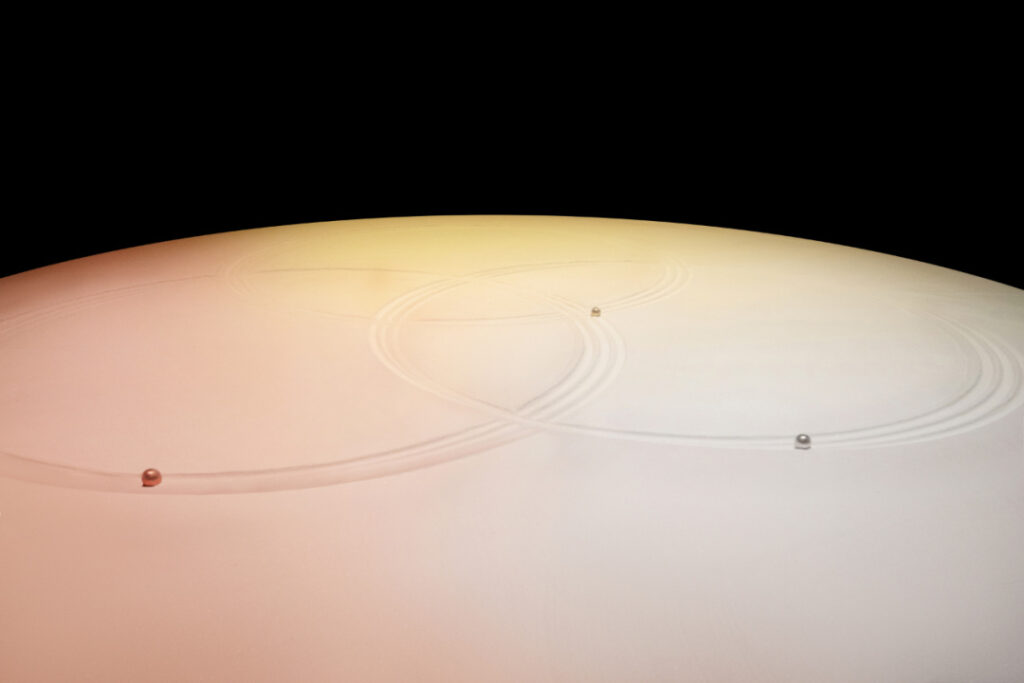

More specifically, the three-ring structure could also represent the three Cartier brothers – independent yet united, irreplaceable and inseparable. Or it could symbolize Cartier’s three “temples” – the flagship stores in Paris, London, and New York.
Delving deeper into these TRINITY elements, we discover they are boldly subversive, diverse and rich, as well as enduring and timeless.
From the simplest origin extends the broadest world. For Cartier, and even for the entire jewelry legend, TRINITY might just be such an existence.
TRINITY is ‘Subversive’
Stepping back to the era when TRINITY was born might help us understand its “subversiveness” more accurately.
It was Paris in the 1920s, a moveable feast where sparks of creativity and thought could overflow at any moment in a café that resembled an art gallery. Careful observation would reveal that changes were lurking everywhere, whether in culture, art, or fashion.
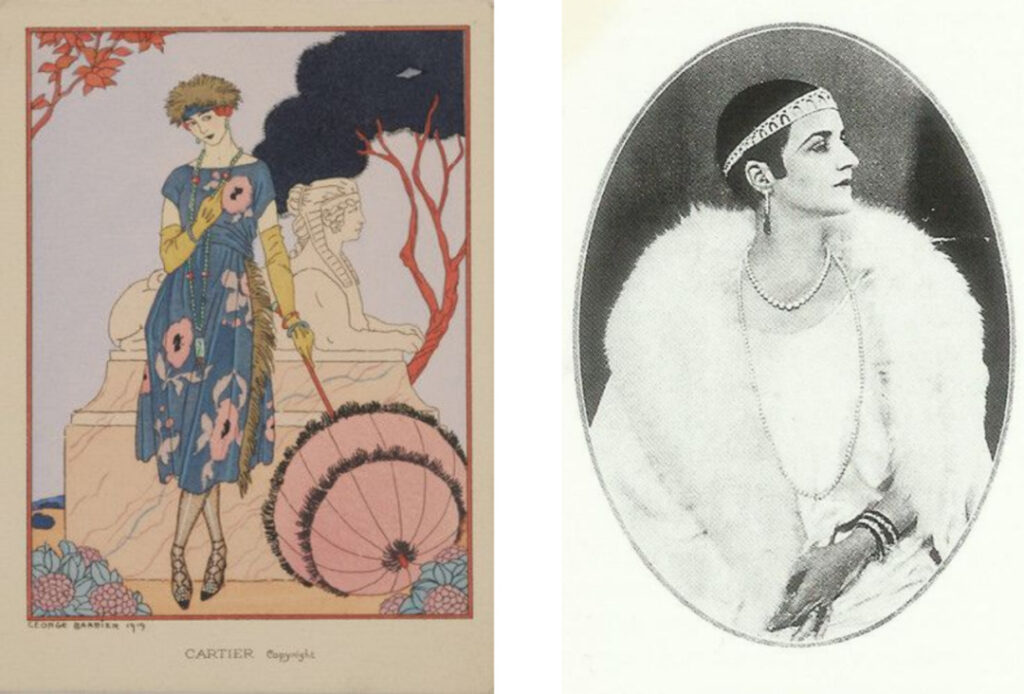
Although the Art Nouveau style, which emphasized rich curves and exquisite carvings, was still in its twilight, and the Art Deco style, which favored geometric beauty, was rising like the morning sun, jewelers remained relatively conservative in jewelry design.
After all, jewelers primarily served the nobility and celebrities. Perhaps because it was difficult to predict whether duchesses or wealthy heirs who would spend fortunes on jewelry would be willing to pay for new trends, abandoning the traditional design concepts based on carving precious gems seemed too risky. Of course, in an era of strict social hierarchy, actively seeking innovation and creating new jewelry values also required considerable foresight and courage.
However, what was TRINITY, born in 1924, like?
It’s a design that remains timeless even when viewed through the lens of a century later.
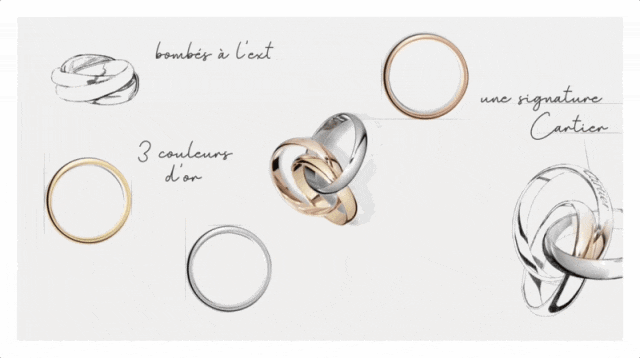
The original TRINITY ring was composed of just three precious metals, with three intertwining rings without any superfluous embellishments. It seemed to transcend any trend of that era, taking a giant leap into a brand new aesthetic style.
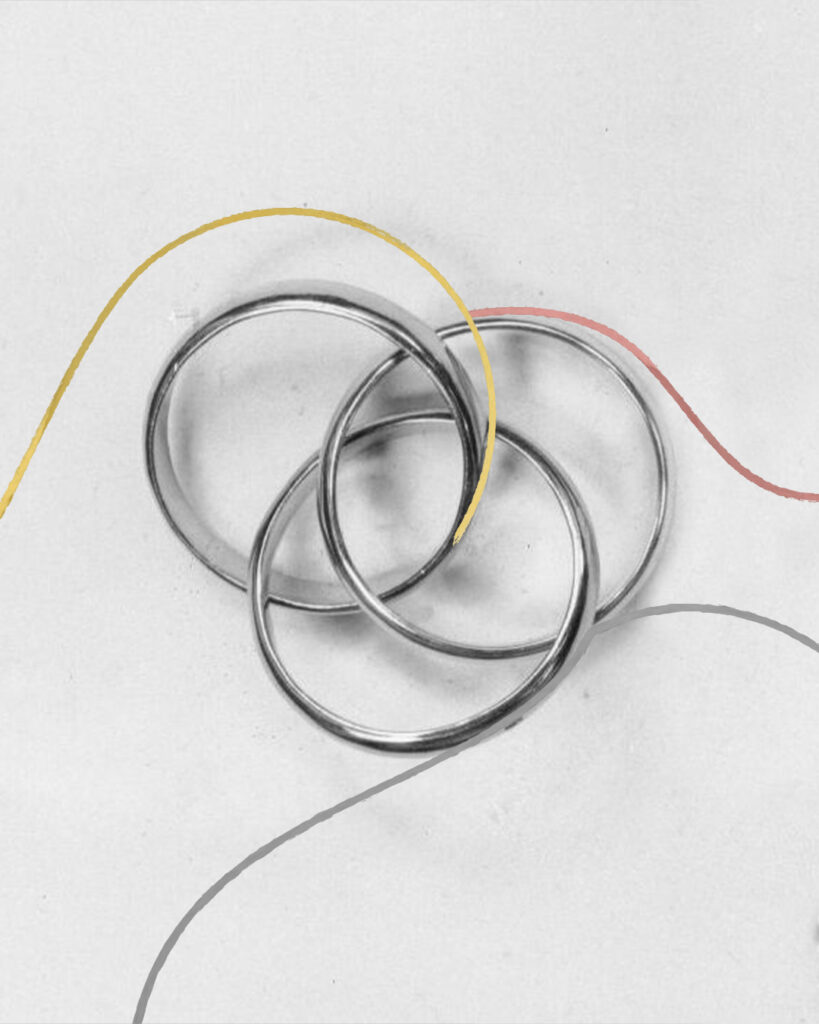
Perhaps only Cartier could achieve such a feat among jewelers.
Why is that?
The most crucial factor was Louis Cartier, the eldest of the three Cartier brothers.
In “The Cartiers: The Untold Story of the Family Behind the Jewelry Empire,” authored by Francesca Cartier Brickell, a sixth-generation Cartier family member, we get a glimpse into Cartier’s approach to global business. Among the tradition-bound jewelers of the time, Louis Cartier was undoubtedly a distinct “rebel.”
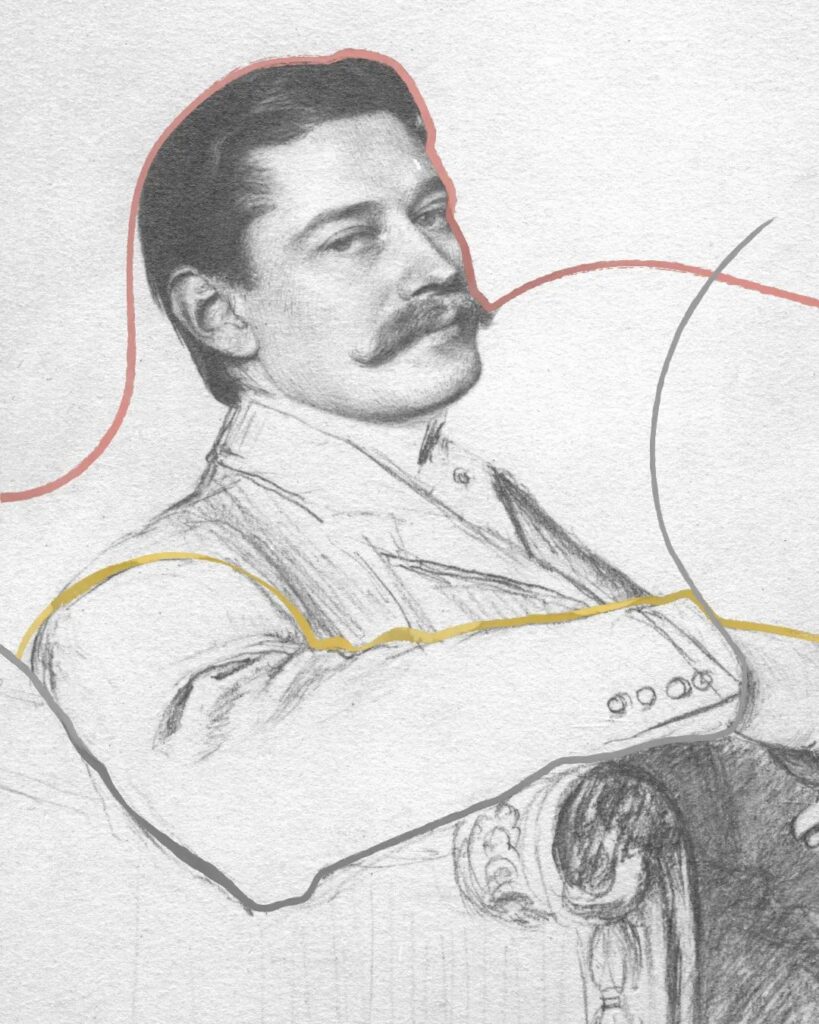
Louis Cartier’s starting point in life was entirely different from his grandfather’s and father’s. With a comfortable family background, quality education, and the jewelry family’s keen sense of advanced technology and craftsmanship, he accompanied his father from a young age to visit world expos that gathered the world’s latest novelties.
Although he was a student who was closely monitored by the school for “not studying hard enough,” no one denied his creativity and curiosity.
Louis Cartier’s “daydreamer” qualities that seemed out of place in school and his personality that refused to stick to conventions actually led him to usher in his own era after he began managing the family business.
Louis realized early on that Cartier’s old business model of selling jewelry from external workshops or purchasing from individual clients was not beneficial.
He firmly believed that for Cartier to stand out among numerous peers, they must sell unique jewelry with distinctive identifiability and a “Cartier style.”
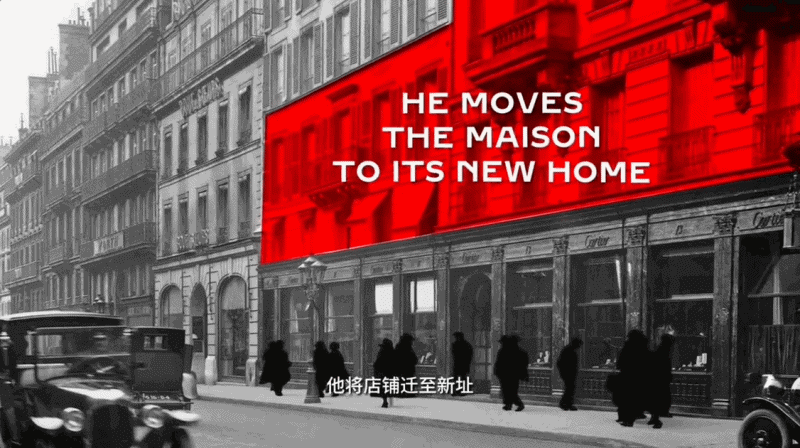
After setting this goal, the first thing to do was to build a team that was both creative enough and capable enough.
Looking at contemporary jewelers (and even the jewelry industry today), Louis Cartier’s recruitment strategy was boldly “outrageous.”
He didn’t believe that hiring professionally trained jewelry designers was sufficient (because he felt too much jewelry in the market was mediocre). Instead, he sought many people who seemed to have nothing to do with “jewelry” –
They were bronze sculptors, lace artisans, tapestry designers… those who worked with ironwork, architecture, interior design. The industry didn’t matter; as long as Louis believed they had talent and gift, he would recruit them to make jewelry.
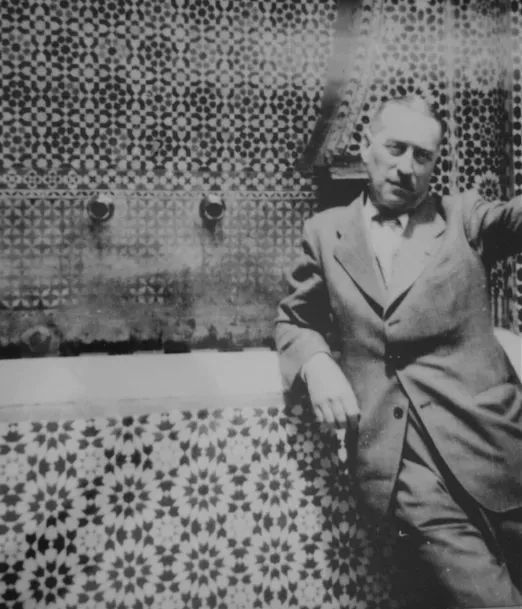
When these artists from different industries started making jewelry, they often had completely different understandings of jewelry structure, symmetry, color use, or proportions compared to traditional jewelry designers.
Louis’s requirements for them were also different. He even hoped that designers could stay away from trends and create jewelry with a sense of “eternity” that could withstand repeated tests of time.
Louis’s bold use and cherishing of talent gave Cartier the greatest benefit: it made people remember that this jeweler at 13 Rue de la Paix in Paris sold the most distinctive jewelry designs on the market.
This also quickly gave Cartier a name among the artistic celebrities who were boldly subverting and reveling in Paris in the 1920s.
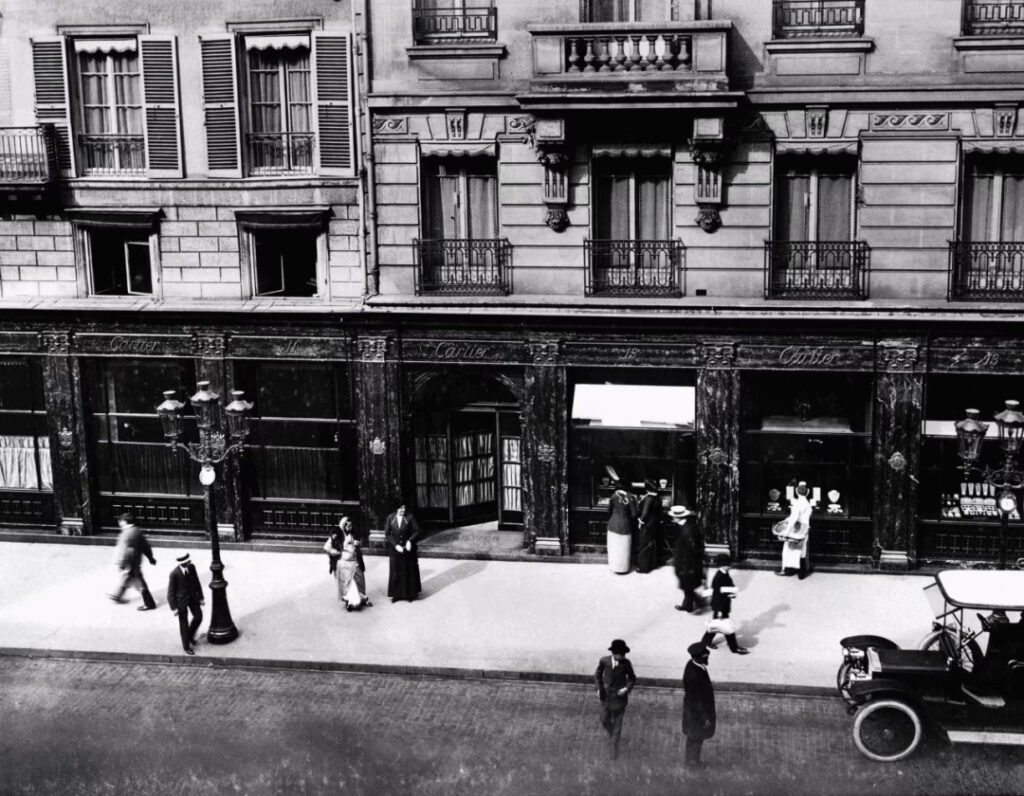
TRINITY is ‘Rich’
Meanwhile, the connotation of jewelry was also quietly changing.
Previously, jewelry was more of a symbol for royalty and nobility to display their privilege, and its aesthetic taste was limited to a small group of people. However, Cartier’s distinctive designs made jewelry more versatile. It could be an essential item at court parties, or add glamour to young ladies from prestigious families attending the opera or a simple daily dinner date.
The birth of TRINITY brought the concept of “everyday jewelry” to a wider audience.
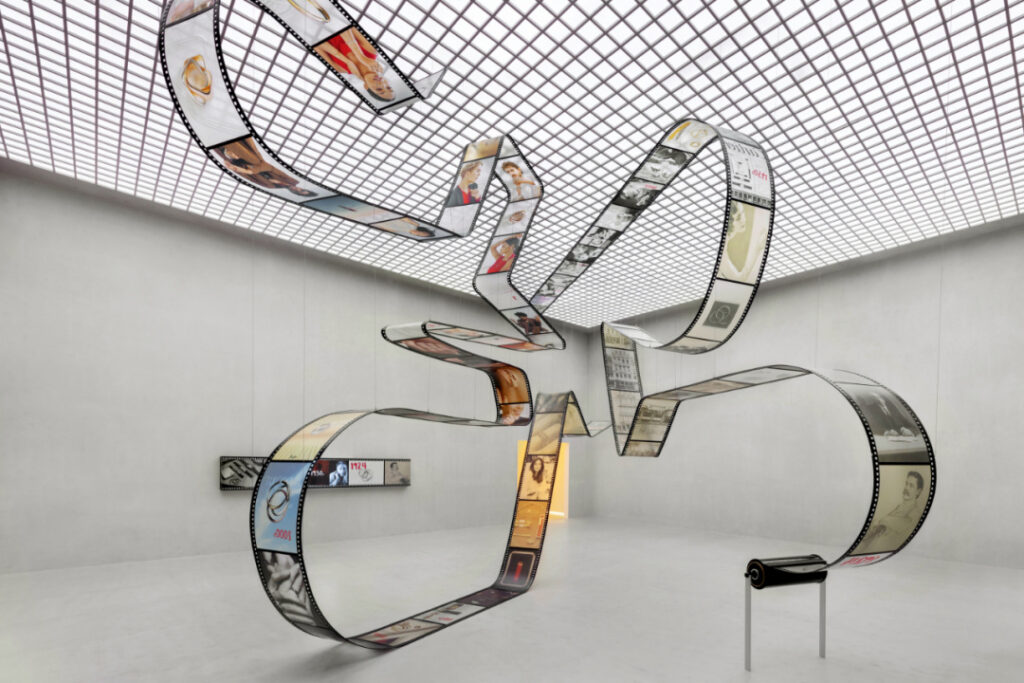

The significance of jewelry lies not only in adorning high-profile moments but also in accompanying every moment.
This concept of wearing jewelry is something we may have only slowly understood its profound meaning many years later, yet TRINITY appeared far ahead of the trends of its time.
So we find that the earliest people who chose Cartier’s TRINITY were often those whose aesthetics and style were not bound by trendy rules.
Jean Cocteau, known for being “playful” and “knowing how to play” in avant-garde art circles, often stacked two TRINITY rings as pinky rings on his left hand.
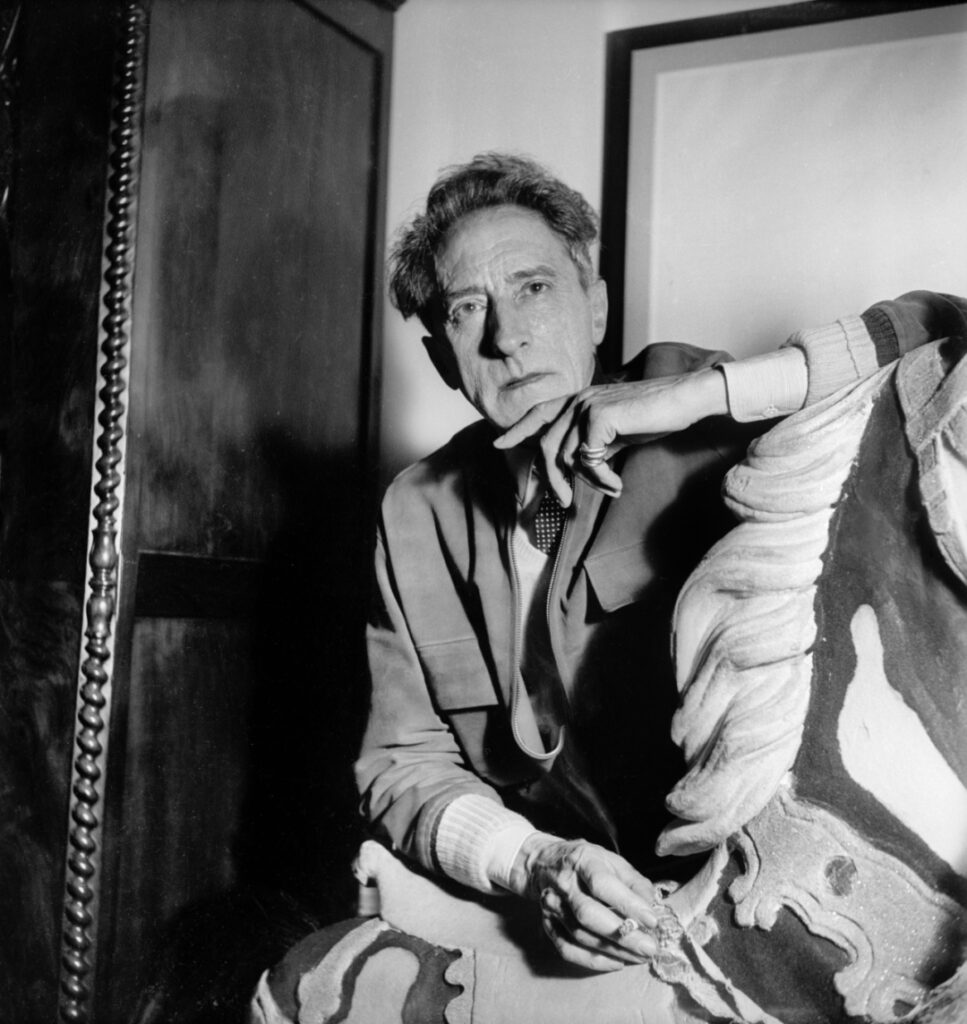
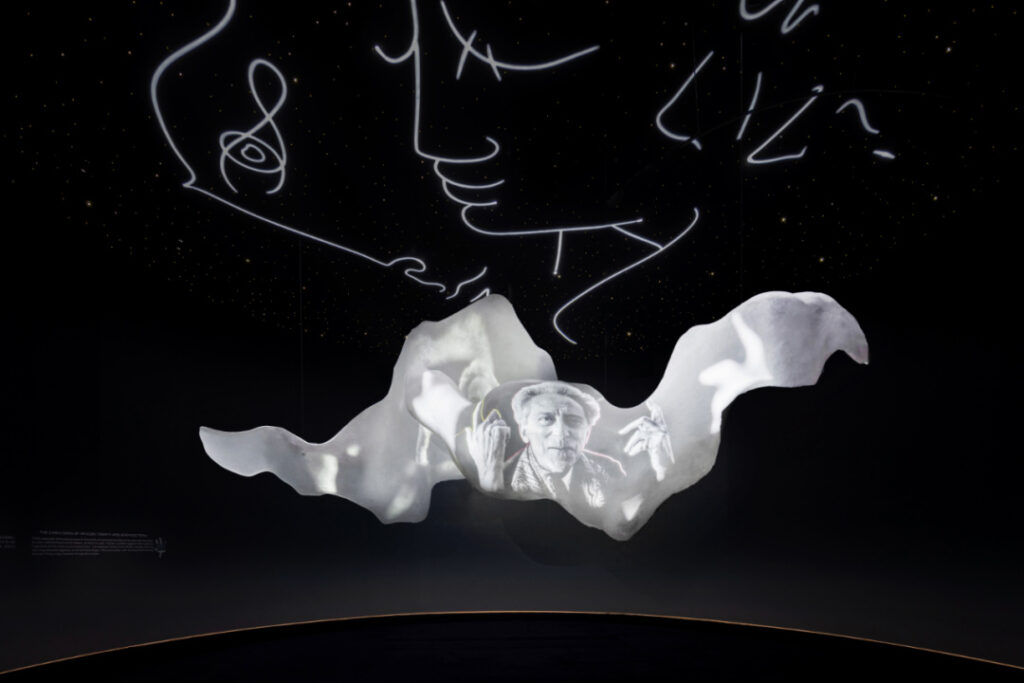
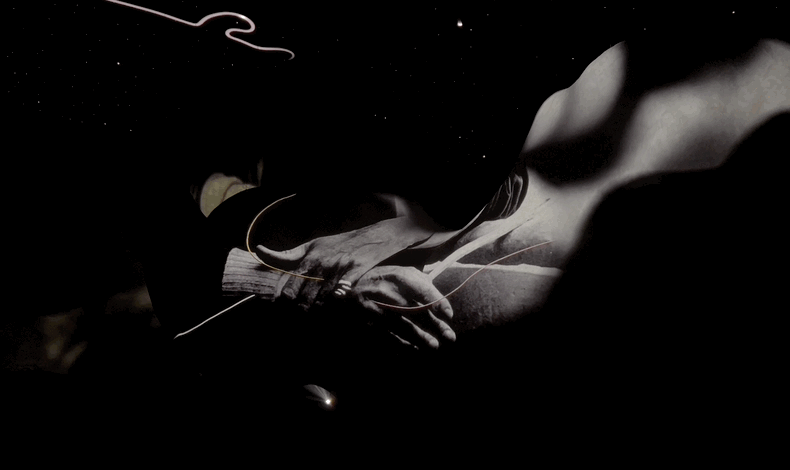
Similarly, the Duke of Windsor, also known for his defiance of tradition, wore two TRINITY rings engraved with his wife’s birthday and name on his pinky finger for a long time in the same way.
Previously, this position was once occupied by the Prince of Wales signet ring, symbolizing “power.” The weight or choice between the two in his heart is not difficult for us as observers to understand.
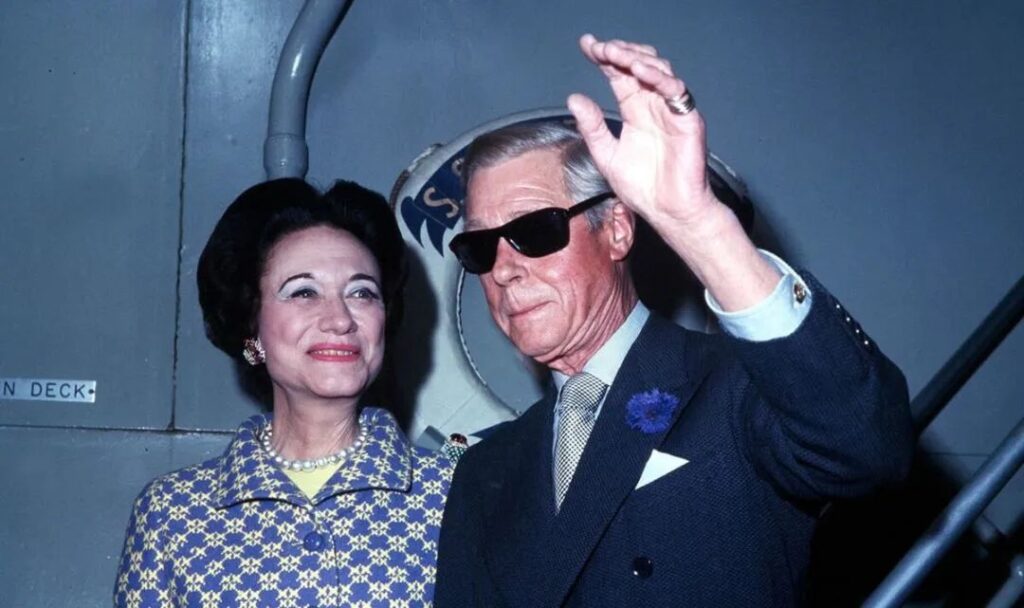
There’s also the familiar Grace Kelly. Even before she was married, she wore TRINITY on her ring finger.
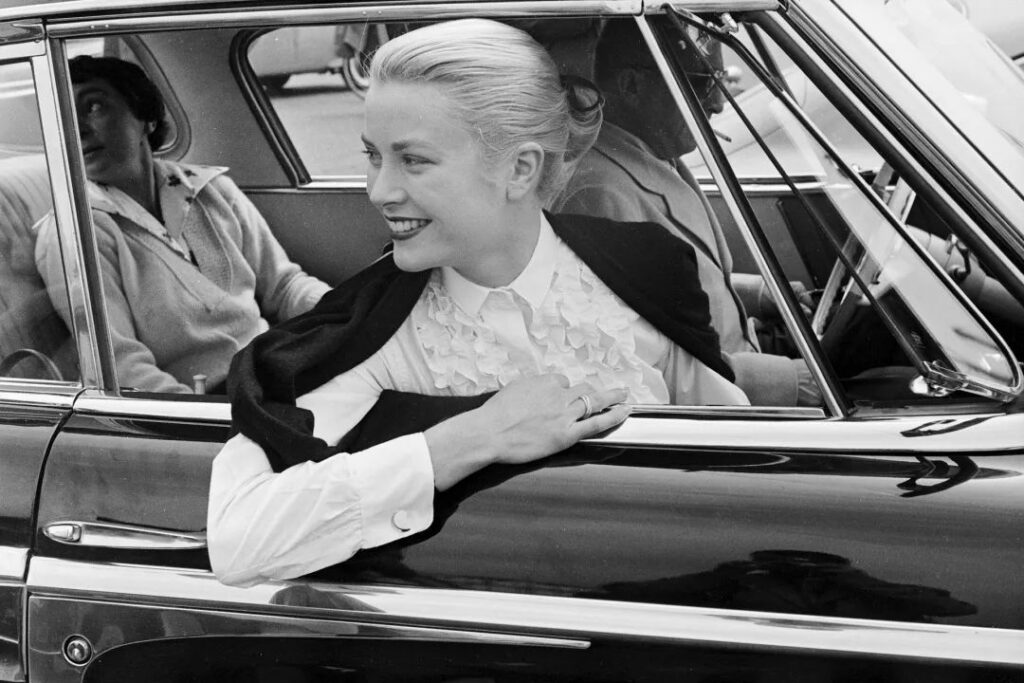
The media once speculated that it was an “engagement ring,” although unconfirmed, this TRINITY undoubtedly held extraordinary meaning for her. Whether it was various red carpet exposures before marriage or private occasions captured after marriage, TRINITY was always by her side.
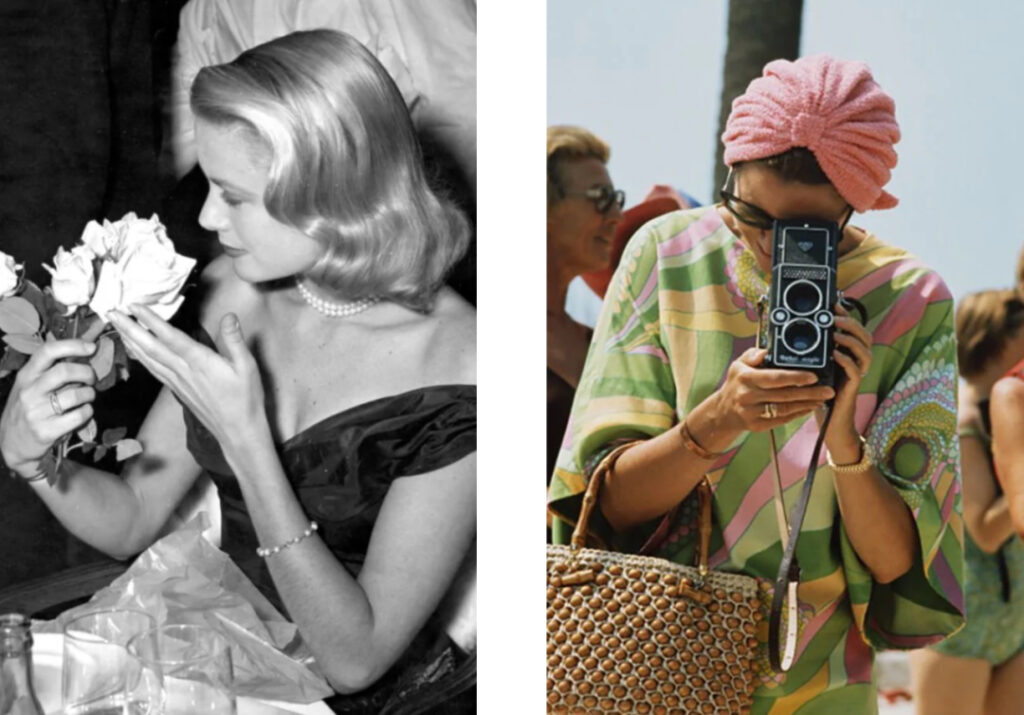
In 1925, model Kendall Lee, sporting a fashionable short hairstyle, wore TRINITY rings and bracelets on the cover of American VOGUE. The magazine praised: “This new set of Cartier jewelry is not only very fashionable, but also ‘very chic and reasonably priced’.”
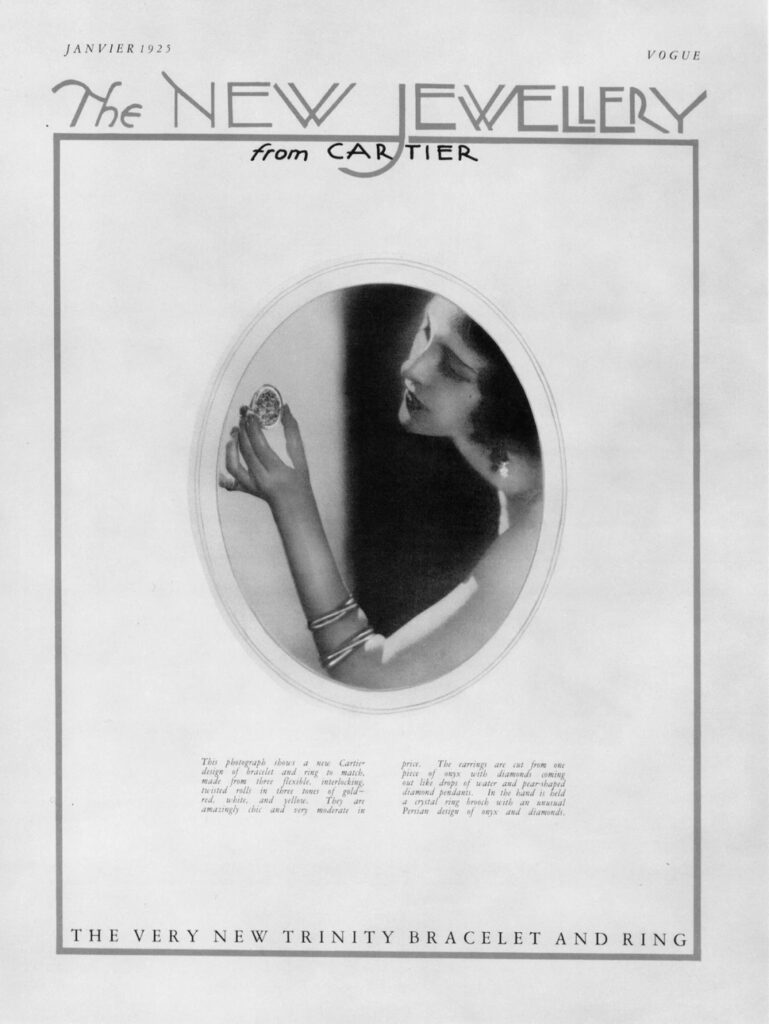
These factors combined imperceptibly allowed more people to access, own, and create their own stories with TRINITY.
From this perspective, TRINITY’s popularity was not a so-called “downward” spread of jewelry aesthetics from royalty to commoners, but rather Cartier’s extremely avant-garde extension of jewelry’s appeal from a small circle to a larger world, while also infusing more vitality into the connotation of jewelry.
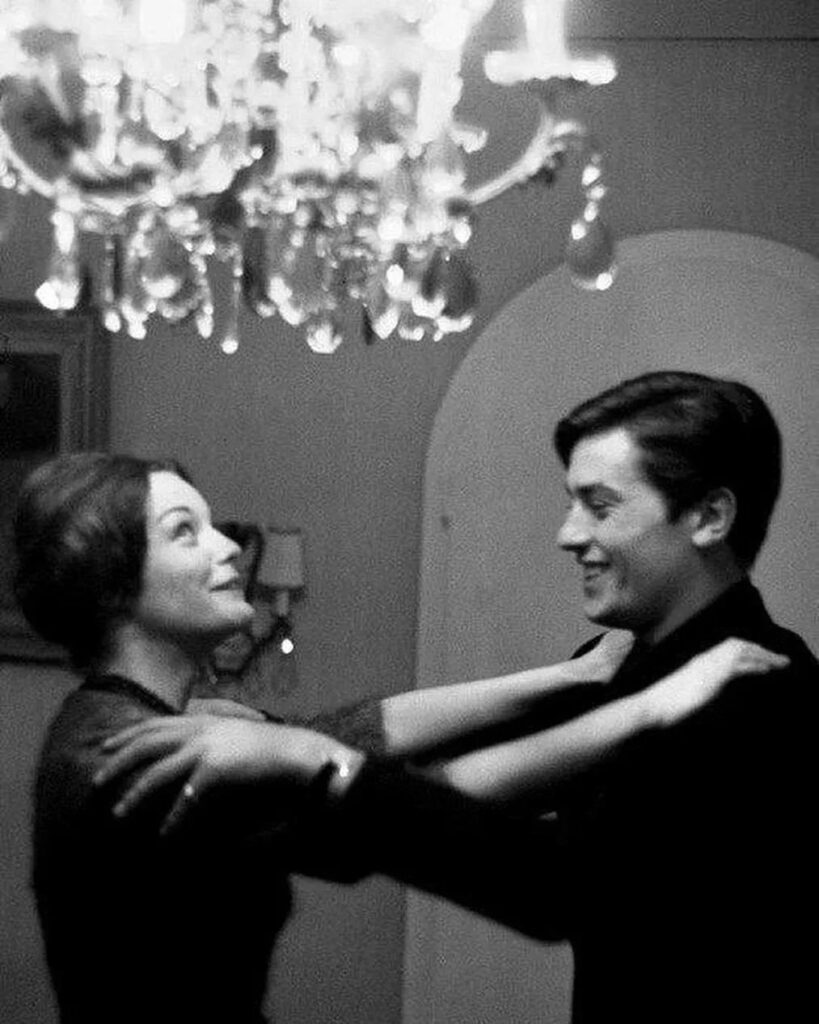
From a universal emotional perspective, it’s not hard to see that the reasons why you and I love TRINITY may not be different from those of the sensational icons of the era.
Based on my own “one-sided” observation, TRINITY might be the most commonly owned jewelry among people around me. Everyone’s reasons for owning it might be different –
My first TRINITY was half a “wedding ring.” When we first got married, we didn’t buy a diamond ring, but we didn’t want to let it pass casually. After much consideration, Director Yang and I each wore a TRINITY, only getting a diamond-set version much later.
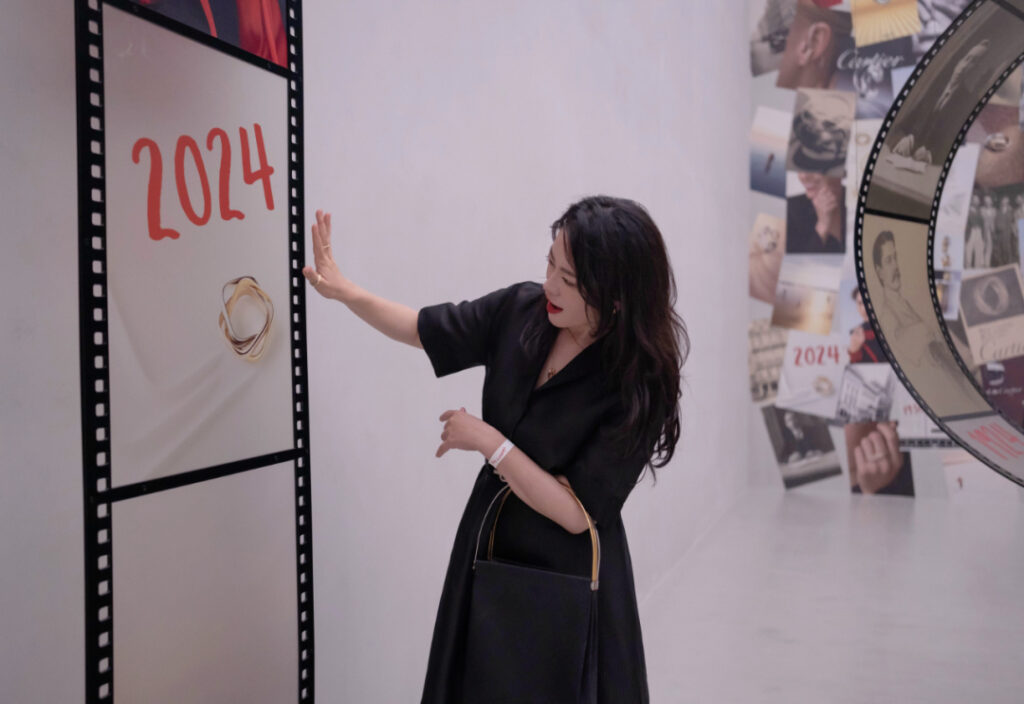
Why TRINITY? One direct reason was that we were both fans of Leslie Cheung, and everyone is familiar with that “For Your Heart Only” album cover. Another reason was that at the time, the most popular interpretation of TRINITY was that the three colors of gold and three interlocking rings symbolized kinship, friendship, and love.
Thinking about it, isn’t this the intimate state I most want to pursue? Feelings are fused, boundless, with a bit of each, but interlocking and indispensable.
Another friend of mine who has been wearing TRINITY for years bought it for herself.
As a fashionable person in her social circle, simplicity and versatility were definitely important reasons. But later when we talked, she told me that she had made a big decision to quit a job that seemed promising but left her feeling deeply drained.
During that time, she happened to see a TRINITY poster in a magazine and was instantly struck. Those three intertwining circles were quite like her past, present, and future, moving from one circle to another. The only constant was that she must adhere to decisions made with 100% heartfelt passion.
TRINITY is like a small, light “tattoo,” on the fingertips and in the heart, looking at it brings one back to the original intention.
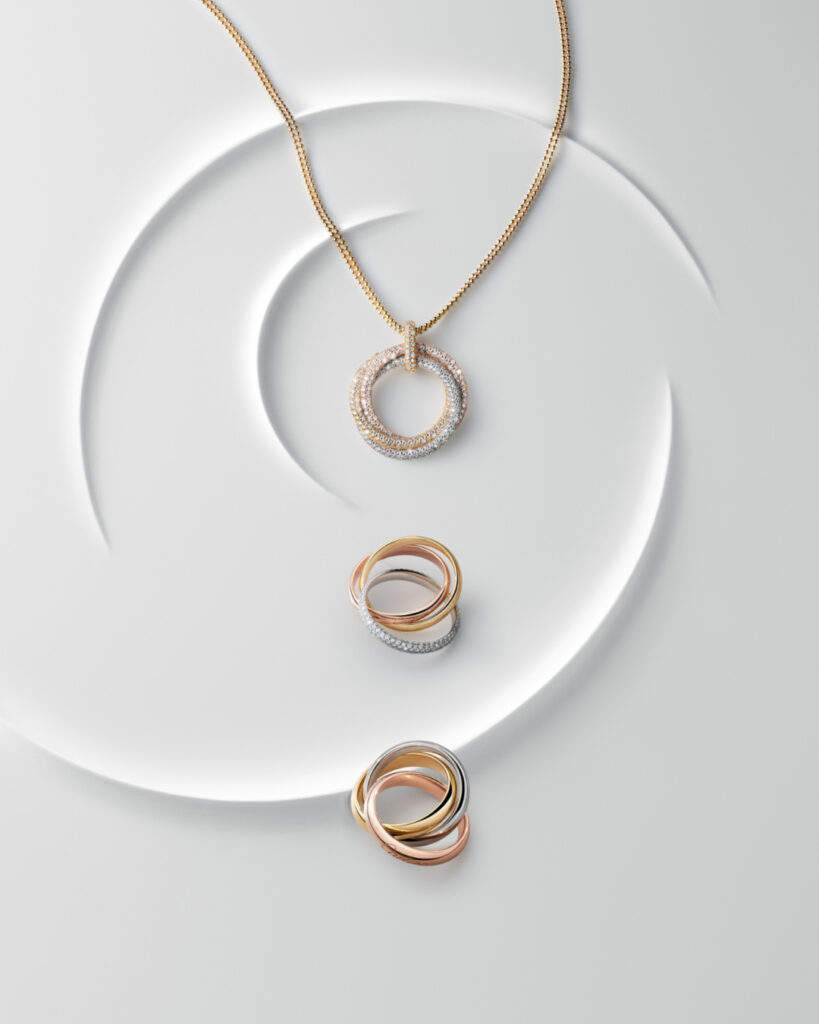
There are also people who bought a TRINITY after having their first baby, wearing it as a pendant close to their chest. She said how could there be jewelry that could represent her family of three so well! She also said that when her child grows up, she wants to pass the ring to them, after all, TRINITY won’t go out of style even after a hundred years.
It’s always interesting to hear people around me talk about their stories with TRINITY. You’ll find that TRINITY can have so many “exclusive” interpretations! They are so intimate, yet so warm. Beyond the conventional meaning of adornment, it is more of a continuation of emotions, a carrier of love, and a reliable, eternally unchanging companion.
TRINITY is ‘Timeless’
Sometimes I wonder, why was it Cartier that created TRINITY, this timeless jewelry symbol?
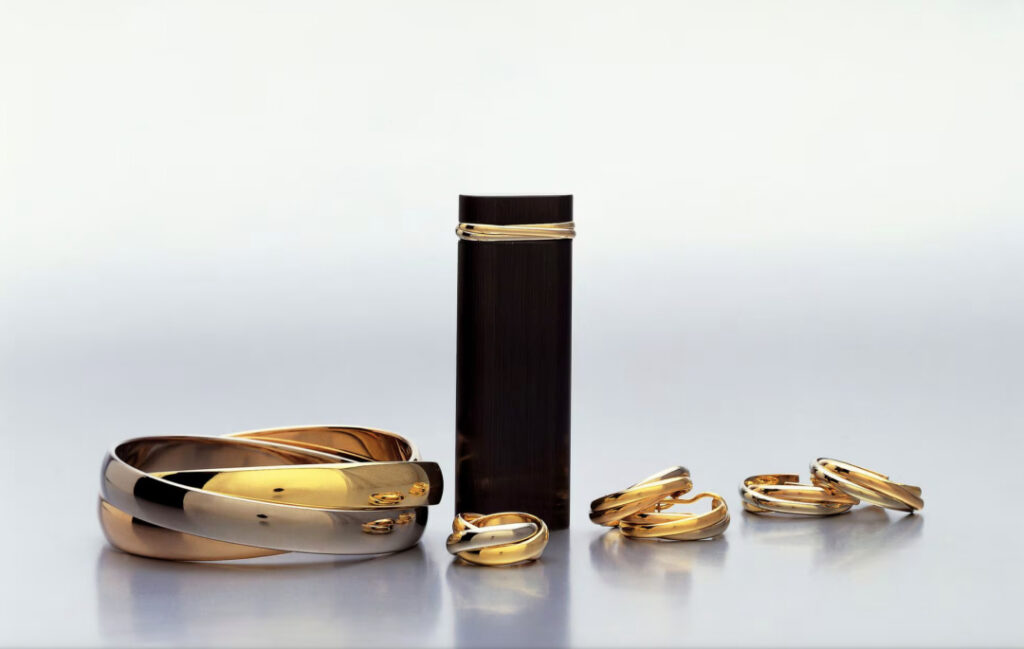
Perhaps it’s because “three begets all things” is not a distant aphorism for Cartier, but a principle that has permeated Cartier’s development.
For Cartier, “three” is like a magical number with special powers. We are reminded of the three Cartier brothers in their youth, gathered around a world map, dreaming of creating “the best jewelry company in the world.” Unlike their grandfather and father who worked alone, there were three of them.
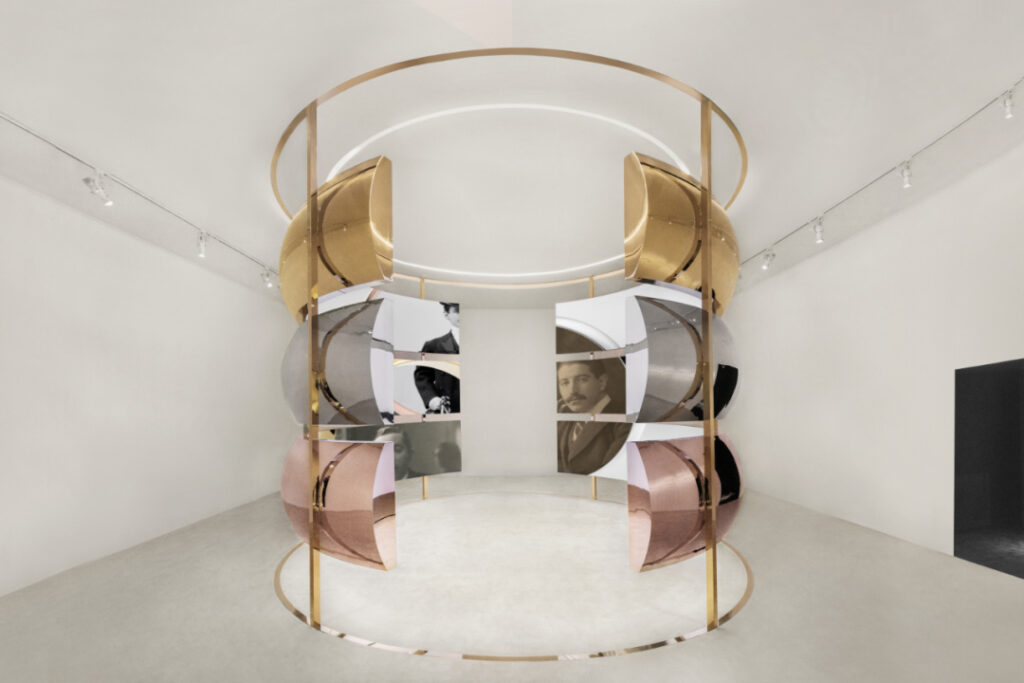
In “The Cartiers: The Untold Story of the Family Behind the Jewelry Empire,” the personalities and stories of the three brothers are revealed through their correspondence, archival materials, and family memories.
The eldest, Louis, was confident, bold, and intelligent. With his unique vision, he was responsible for Cartier’s business at the Paris headquarters. The second brother, Pierre Cartier, was detail-oriented and eloquent. He was an outstanding businessman and marketing genius who quickly established Cartier’s reputation in New York.
The youngest, Jacques Cartier, was gentle and inclusive. He brought back rich design inspiration from India and the Middle East. Thanks to his efforts, Cartier opened a workshop in London, producing masterpieces continuously.
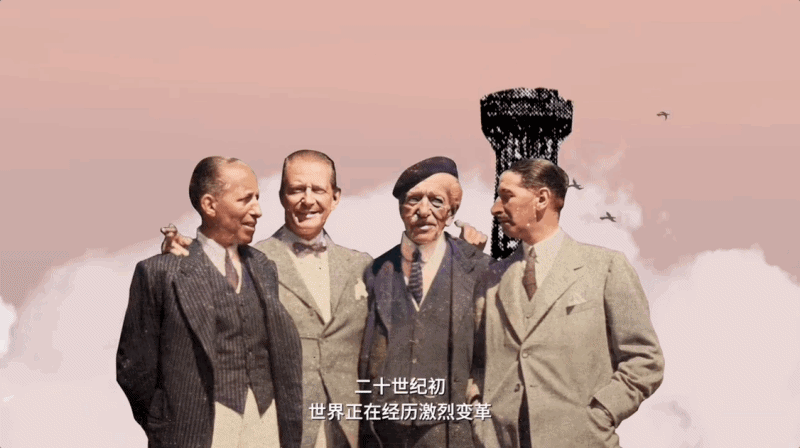
Each of the three brothers had their own management style. They were independent yet closely connected. Although scattered in different cities, they frequently maintained close contact through letters and telegrams. Without the deepest affection between the three brothers as a foundation, it would have been difficult to achieve such a harmonious state.
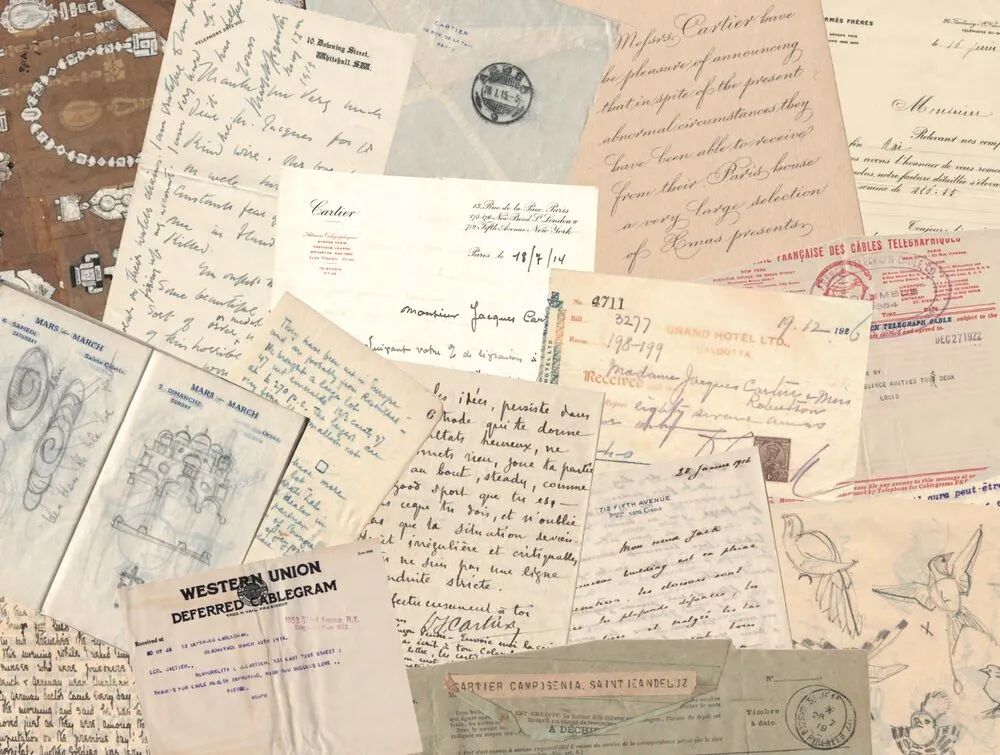
The Cartier boutiques in Paris, London, and New York are also known as the three “temples” in Cartier’s history. Amazingly, their relationship is like the three interlocking rings of TRINITY, harmoniously connected without any hierarchy.
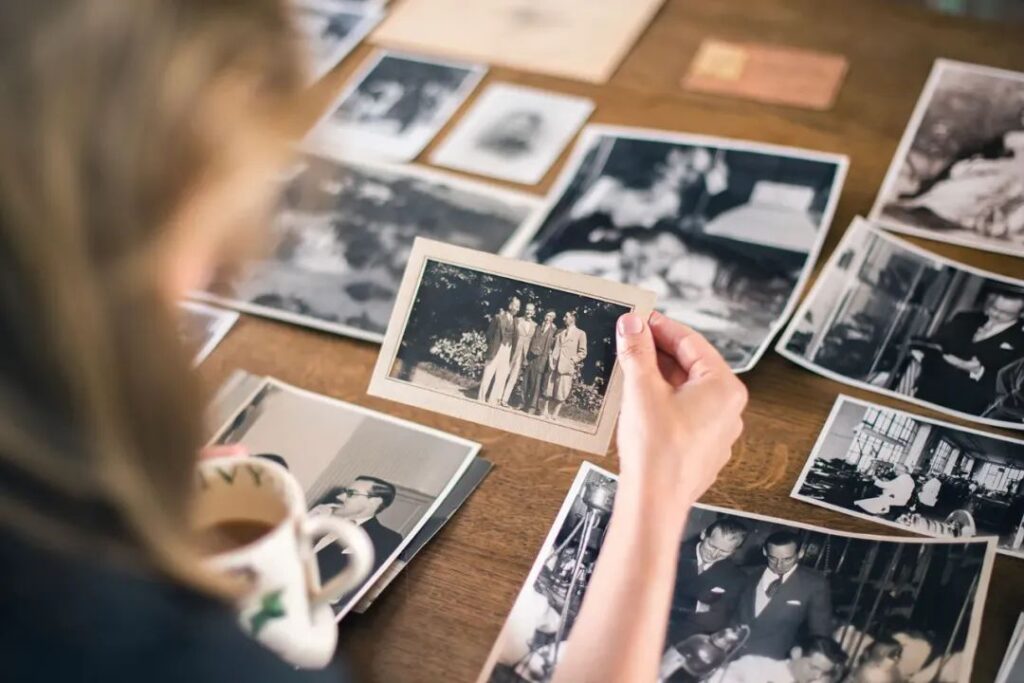
Starting from “three,” Cartier’s stylistic influence spread to more distant spaces and penetrated deeper into time.
All things tend towards entropy, and the world is constantly in motion and changing. It is precisely this opportunity that allows us, at some point a hundred years later, in some corner of the world map, to witness the path TRINITY has traveled.
And TRINITY no longer merely tells one story or expresses one connection.
As we saw and heard in the TRINITY 100 themed exhibition. Each individual who collectively forms this space, the sounds they emit, the images they depict, compose different rhythms, but we can always find the same starting point of these rhythms. This unrestricted resonance also moves us to create new meanings.
Therefore, I prefer to treat TRINITY as a way of looking at oneself and observing the world. The great way is simple; from complexity, we extract the essence, using pure and simple strokes to depict the most sincere and simple values deep in the human heart.
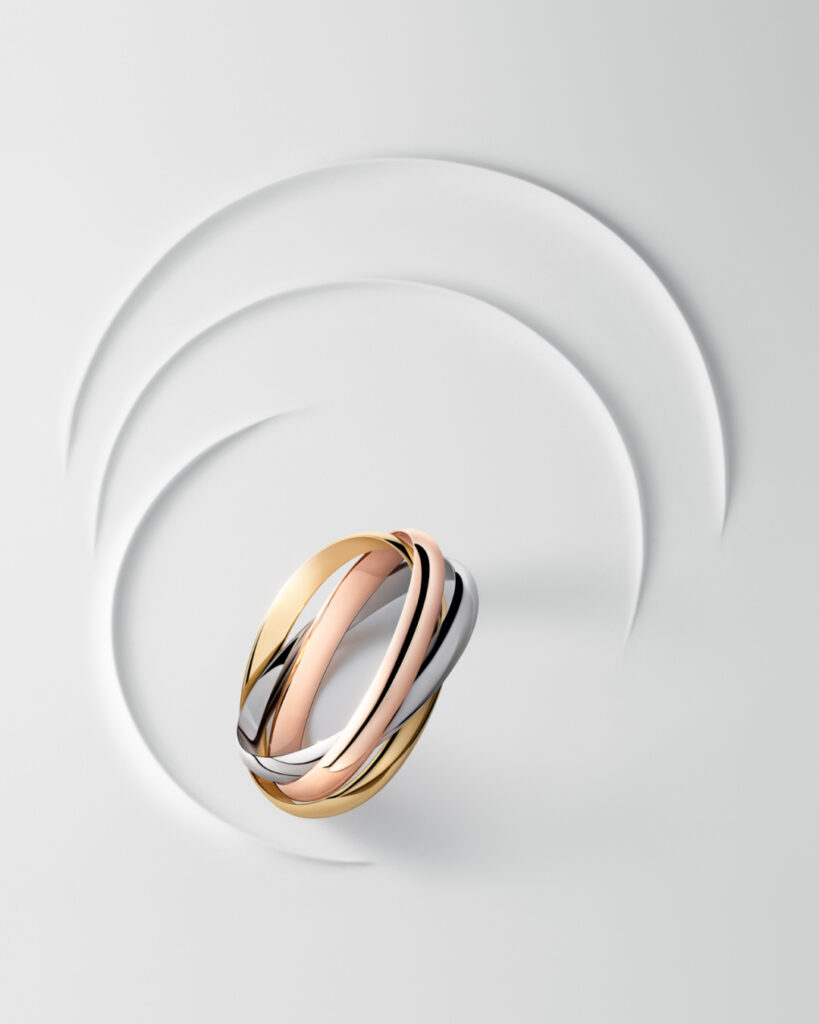
TRINITY’s beauty originates from all things and creates all things, like a “miracle” – simple and clear, yet beautifully ingenious; boldly innovative, yet harmonious; carrying subtle philosophy. Isn’t this a kind of timelessness?
For a hundred years, even the most discerning jewelry connoisseurs have been delighted by it, while ordinary people like you and me easily understand its “unspoken words,” which have always been hidden in the most cherished places of our hearts.
As the exhibition came to an end, my thoughts were still jumping. Besides new knowledge and interesting insights, I gained a different feeling from before – appreciating jewelry doesn’t require looking up, it only needs the investment of genuine emotions to blend with it.
At the end of Cartier’s TRINITY 100 themed exhibition, a large three-dimensional installation composed of red and white was suspended. Standing in different positions, the visual perception also differed. The three rings seemed static, yet always maintaining movement, with myriad postures, but always interconnected.

I think this is what TRINITY wants to bring to everyone. Love has different images in everyone’s heart, and the expression of love is diverse and varied, but love connects everything and embraces everything, giving birth to all things and returning to the original heart.
This is probably the most plain and greatest miracle that everyone can touch!
Cartier’s TRINITY: The Miracle Ring That Defies Time and Imagination
Tweet
